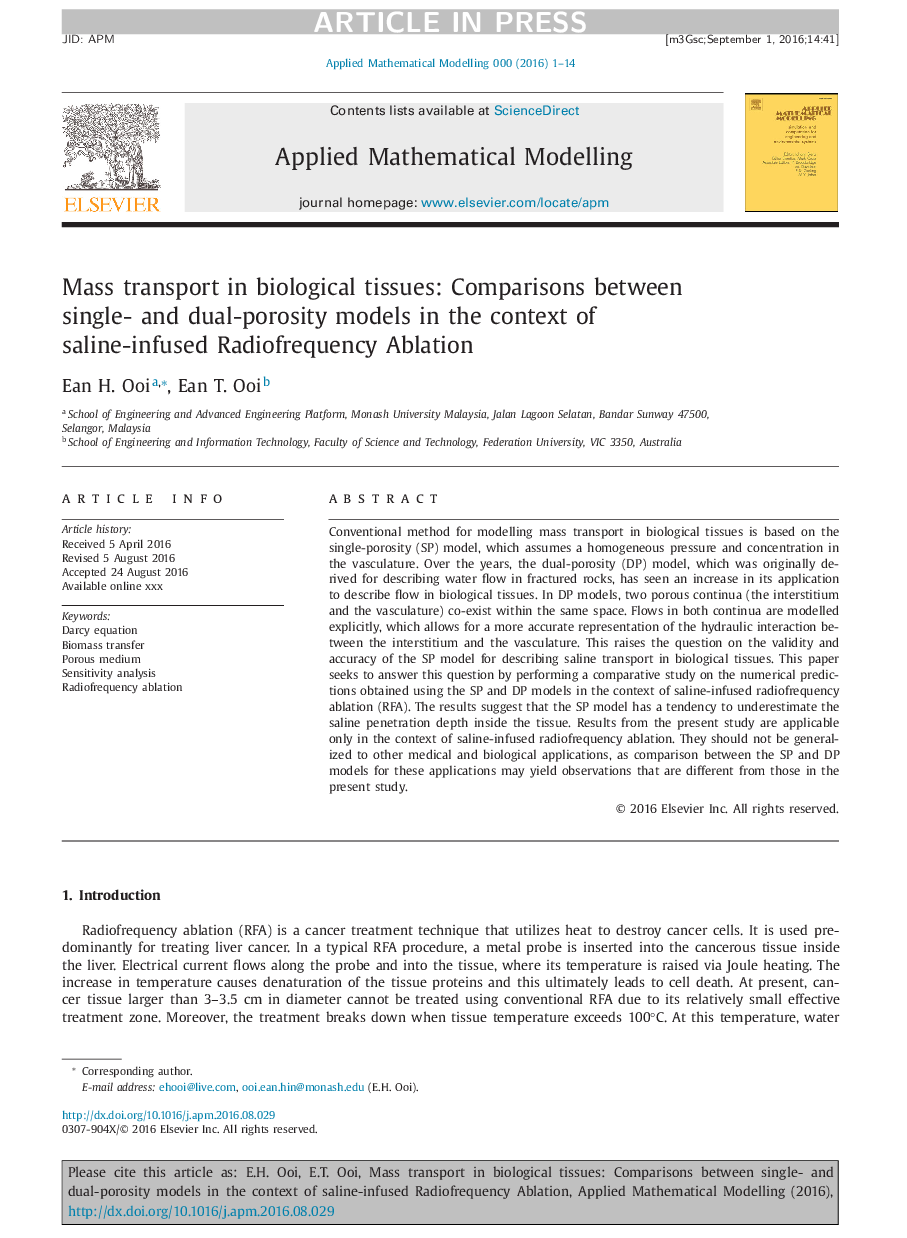| Article ID | Journal | Published Year | Pages | File Type |
|---|---|---|---|---|
| 5471362 | Applied Mathematical Modelling | 2017 | 14 Pages |
Abstract
Conventional method for modelling mass transport in biological tissues is based on the single-porosity (SP) model, which assumes a homogeneous pressure and concentration in the vasculature. Over the years, the dual-porosity (DP) model, which was originally derived for describing water flow in fractured rocks, has seen an increase in its application to describe flow in biological tissues. In DP models, two porous continua (the interstitium and the vasculature) co-exist within the same space. Flows in both continua are modelled explicitly, which allows for a more accurate representation of the hydraulic interaction between the interstitium and the vasculature. This raises the question on the validity and accuracy of the SP model for describing saline transport in biological tissues. This paper seeks to answer this question by performing a comparative study on the numerical predictions obtained using the SP and DP models in the context of saline-infused radiofrequency ablation (RFA). The results suggest that the SP model has a tendency to underestimate the saline penetration depth inside the tissue. Results from the present study are applicable only in the context of saline-infused radiofrequency ablation. They should not be generalized to other medical and biological applications, as comparison between the SP and DP models for these applications may yield observations that are different from those in the present study.
Related Topics
Physical Sciences and Engineering
Engineering
Computational Mechanics
Authors
Ean H. Ooi, Ean T. Ooi,
